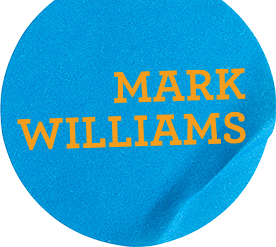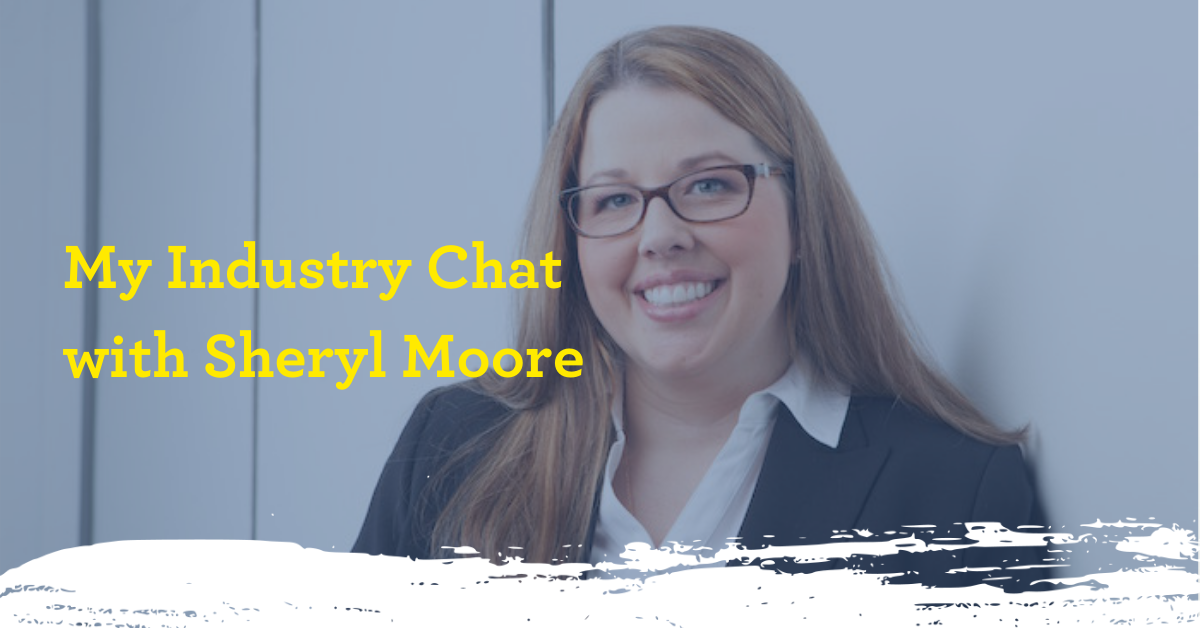I was delighted to have the opportunity to sit down with Sheryl Moore, president and CEO of Moore Market Intelligence and Wink, Inc. Annuities and Life Insurance Consulting. Sheryl and her team have a superior reputation providing competitive intelligence, market research and product development, and their competitive intelligence tools have become an essential service for the insurance industry.
Sheryl, I can’t tell you how much we rely on Wink. I love what you guys do, and I’m thrilled that you took the time, so thank you very much.
We appreciate Brokers International, too. You guys mean a lot to the industry and I’m constantly giving credit to BI for being the start of field marketing organizations. So thank you very much for the honor of doing this interview.
Please tell me a bit about your early start in the industry and how Moore Market Intelligence and Wink got to where they are today.
What really motivated me to start my own business was being a struggling single mom of three kids with no child support in Des Moines, Iowa and needing a job that provided some safety and stability. I said to myself, ‘What can I do in Des Moines where if something happens to my employer and they get shut down or acquired, I can walk across the street and do the same darn thing and not miss a paycheck.’ Insurance was very logical since Des Moines is the second-largest insurance capital in the U.S., third-largest in the world and the annuity capital of the United States. I landed a job with the number-one insurance company in indexed life insurance and indexed annuities. I started with what was a small company then and moved up until I was just a few notches down from the CEO in charge of product development and competitive intelligence. I was very lucky it was a very entrepreneurial company that gave me a very large budget center to ensure we remained at the top of the indexed life and annuity markets and retained our market share.
I knew my competitor’s products better than my competitors knew their own products. I followed my CEO’s directive and assisted a lot of insurance companies with their development of indexed life and annuities to the point where this company became a big fish in a big pond. Eventually, I was given an attractive offer to develop indexed products for another insurance company. Fortunately, this company used a captive distribution model for their products, and that’s when I realized that competitive intelligence and captive distributions are sometimes an oxymoron.
I needed to stake out on my own but was challenged because women are few in the industry and I was very young. We started annuityspecs.com, which today is housed at the Wink website at looktowink.com, a product resource that houses information, features and rates for all kinds of annuities and life insurance.
Today, I hear a lot of people say, ‘I don’t really know what Sheryl or the company does, but I do know that they know a lot of people and they’re crazy about insurance.’ So when people ask what we do, I tell them, ‘We make insurance and annuities fun!”
What’s the biggest change you’ve seen in annuities?
I’ve seen a lot of changes on both the life and annuity side, and I’ve been really discouraged on the annuity side, especially because regulation has changed the product in such a big way. Regulation has taken choices away from consumers because of market conduct problems, like unsuitable sales, and regulators responded by taking away products with long surrender charges because they see, for example, 85-year-olds buying products with 15-year surrender charges. I agree that sometimes that’s not suitable, but I am a 42-year-old woman, and a 15-year surrender charge product would be suitable for me. Why get rid of all 15-year surrender charge products? That’s not right. It’s a band-aid on a market conduct problem that takes choices away from consumers and arbitrarily says, ‘All 80-year-old consumers are not able to choose what’s right for themselves.’ My nearly 80-year-old grandmother can put $100,000 down to buy a Cadillac at my local dealership but can’t take her $100,000 and buy a 15-year surrender charge annuity.
What about in indexed life?
Illustrated rates and the way that’s been regulated has been discouraging. Also, recent developments with multipliers and bonuses are really changing the conversation with illustrated rates, and it’s reminiscent of how we had inflation and traditional universal life illustrated at rates of 12% back in the ’80s. That’s been a really big change in the market as well.
Now I work with all life insurance products — fixed, indexed, variable, even term — but I’m really excited about indexed products because of my personal experience with them. At my consulting firm Moore Market Intelligence, I only work with indexed products on that side of my business. When I got started almost 20 years ago, indexed insurance products were really the naughty stepchild of the insurance industry. There were a lot of lawsuits and suitability problems with indexed annuities, and nobody wanted to touch indexed life because guaranteed universal life (GUL) was easy to sell. Now, everybody wants indexed insurance products, and I think, ‘How do you like me now?’
Because of low interest rates and market volatility, a lot of companies are getting into the game, and variable annuity sales are a totally different game than they were 20 years ago. Following the market collapse, these companies started repricing their living benefits and saying, ‘We need a different product to replace lost variable annuity sales but can’t switch to fixed annuities like we would have historically because rates are so bad.’ On the life side, changes in regulation for pricing extended no-lapse guarantees are really unfavorable and expensive from a reserving standpoint. So historically, where people would have been selling the heck out of GUL, insurance companies are now taking a look at indexed life insurance. So it’s an exciting time for me. I’ve been preaching about indexed insurance products for 20 years, and finally people are saying, ‘I see what she’s talking about now.’
In your view, what does distribution look like in the future?
Distribution has really changed since the indexed annuity market first started, and increasingly, especially since the conversations began about indexed annuities becoming securities products, independent agents are trying to diversify their businesses in a big way. There are a lot of opportunities here for independent agents, and I am increasingly hearing them ask, ‘What can I do to diversify my business,’ and say ‘I’m interested in selling life insurance products,’ which I think is a very smart move.
Still, there’s been a lot of doom and gloom in the press about a dwindling market share coming through independent insurance agents. While true, it does not mean that independent agents have no future in the indexed insurance market. Rather, it just means that the indexed insurance market is growing and a greater percentage of sales is going to banks and broker-dealers. The annuity pie is growing, but the slice going to independent agents is smaller.
We heard that the Fed is working on three rate hikes. When rates go up — and I have seen a big change in certificate of deposit (CD) rates — it means a change in the percentage market share that’s going to banks and broker-dealers for indexed annuity sales. Banks will want to keep that money in house if they can. When CD rates are more attractive and CD sales go back up, indexed annuities will no longer be the golden child. Also, there are opportunities here for independent agents who have securities licenses or affiliations with banks and broker-dealers. A lot of marketing organizations don’t have those affiliations.
What changes do you see coming to our industry in terms of product innovation?
With interest rates going up, I see a lot of product opportunities. On the life insurance side, we definitely will see traditional UL rates increase. With indexed life, we will probably see products become less complex. With indexed annuities, we’ll eventually see, if interest rates get much better, less crediting methods and less indexes available. This “innovation” with crediting methods and indexes and ways to limit interest is very cyclical in relation interest rates. So when rates come back up, we’ll return to S&P 500 annual point to point with a cap, which is simplest and is what we’ve seen historically. We’ll also start to see a focus on simplicity, distribution channels other than banks, and accumulation sales. I expect less full-service national broker-dealer sales and higher premium bonuses. Guaranteed Lifetime Withdrawal Benefits (GLWBs) will become less of a focus. We’ll start to see more fixed annuity sales should rates get high enough, and Multi-Year Guaranteed Annuity (MYGA) sales will rebound as well.
What advice you would give to a new agent starting out in the industry today?
One of the most important pieces of advice that I can give any sales person selling life insurance today is that you need to be an educator. Don’t worry so much about making sales, but instead really invest in your prospects and your clients by teaching them about what you’re doing and the services you offer. When you entrust your prospects and your clients with that knowledge, you’re building an important relationship that will bring you leads and business opportunities. This also helps close the conversation on replacement because clients won’t want to speak to somebody else about other products if they have a trusted relationship with you.
Our business has become very transactional, which is a shame because it’s more than just a one and done sale of an annuity product. You’re leaving money on table if you’re only talking about annuities. You have an opportunity to make good income if you are selling life insurance. It does take a little bit extra work, but it can be so gratifying. You’ll be well served by taking the time to learn about products other than annuities and by focusing on doing what’s right. If you don’t worry about the money, it will come.
As somebody who has lost a child, I can tell you that my relationship with my insurance agent is so important to me. He has earned all the more income because of that relationship, through the many referrals I’ve given him following the death claim he helped pay on my son. I am grateful for what he did to help me in that time of need.
Thank you for your openness in discussing such a very personal situation, which has given what we do in Insurance so much immediacy. I’m very sorry for the loss of your child.
To wrap up, could you describe what a relaxing Saturday morning looks like in your house?
A perfect Saturday morning is me sleeping in until 9 a.m. and waking up to the sound of my 15-month-old baby on the baby monitor saying, “Mama,” going in and waking him up by singing Gene Kelly songs to him, then us waking up his four-year-old brother, who I found out I was pregnant with two days after burying my oldest child. Then we would wake up Daddy and go eat at our favorite breakfast dive around the corner. After that, we’d go to the park and maybe play at the splash pad, come home, play some board games, eat some lunch and wind down. This is really sad, but while they are napping I’d be putting together spreadsheets on indexed annuities or GLWBs!
I’m not kidding that I don’t work a single day in my life. I never take that for granted, because I had to learn the tough way that money isn’t everything. Every day, I get to work with people who are family to me. I love what I do and am so grateful for that.

